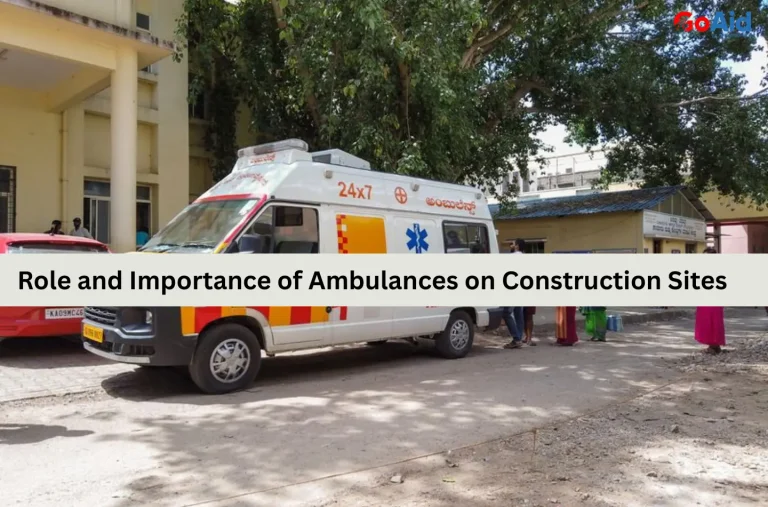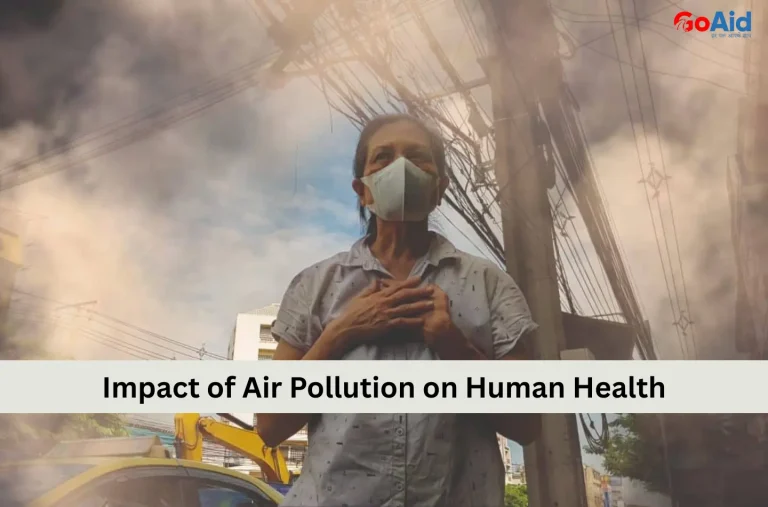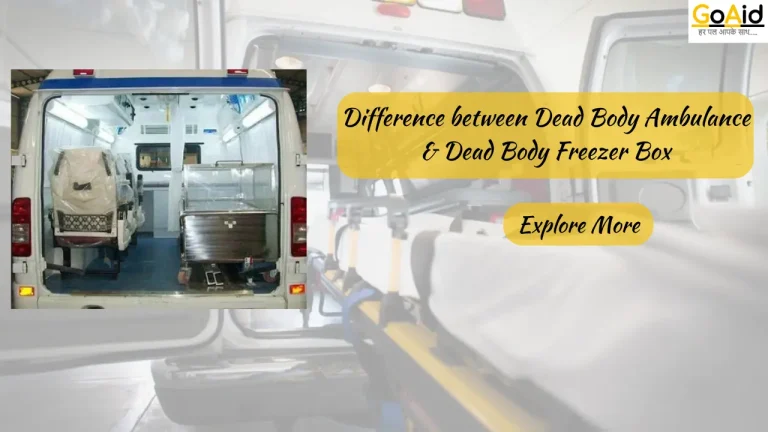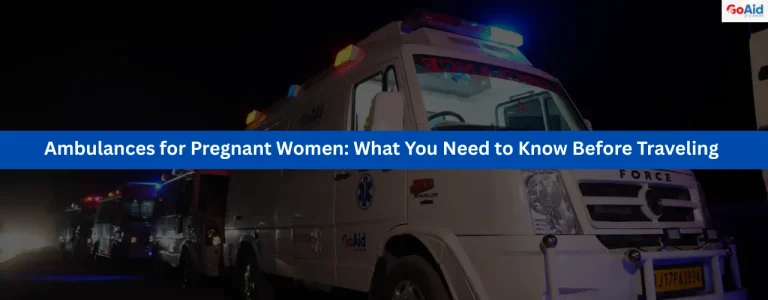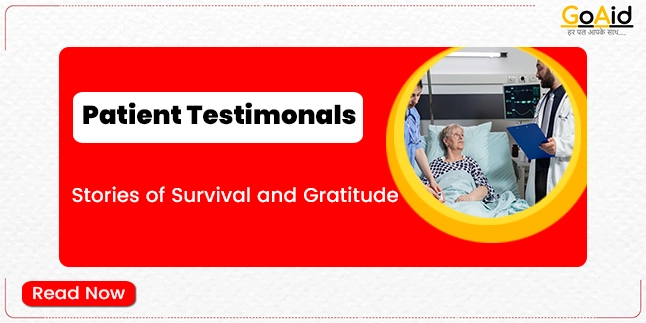In India, whenever it comes to the implementation of safety regulations at educational institutions in India like schools, colleges, and universities, we donŌĆÖt find them following these regulations and taking the safety of students seriously. But we need to understand the requirement for an on-site ambulance at educational campuses in India.
This is why, in this blog, we have added a full set of details highlighting the need for ambulance services in schools, colleges, & Universities. Are you excited to know why educational institutes require on-site ambulances deployed within their campus? Then read this blog to the end.
So, letŌĆÖs start-
Overview of the Schools, Colleges & Universities in India
India is home to one of the largest education systems in the world, with lakhs of schools, thousands of colleges, and hundreds of universities spread across urban and rural regions. From government-run schools to private institutions and international universities, the diversity is massive. These educational campuses are packed with students, teachers, non-teaching staff, and visitors daily. This makes them highly active and sensitive zones.
However, despite this scale and importance, very few institutions focus on health emergency preparedness. Most campuses are not equipped with on-site ambulance services or even a basic medical response setup. With rising student numbers and increased participation in sports, practicals, experiments, and large events, the risk of medical emergencies has grown significantly.
This lack of medical infrastructure at campuses is a serious concern that cannot be ignored. ThatŌĆÖs why the need for dedicated ambulances for schools, colleges, and universities is more crucial now than ever before.
Common Health & Safety Problems at Schools, Colleges & Universities Campus
Despite the growing number of students and activities, most campuses in India lack strong health and safety infrastructure. Below are some common issues that highlight why ambulance for schools, colleges, and universities is essential for every institution:
1. Sudden Medical Emergency in Schools and Colleges
Students may experience sudden health issues like asthma attacks, seizures, or fainting spells. Without immediate medical care in schools and colleges, such emergencies can escalate dangerously before help arrives.
2. Sports and Physical Injury
During sports or physical training, injuries like fractures, concussions, or sprains are common. Without an on-site ambulance service, transferring the injured quickly becomes a challenge.
3. Lack of First Aid in Educational Institutions
Many institutions lack proper first aid in educational institutions, with staff untrained in basic emergency response, delaying critical care in the golden hour.
4. Stress-Induced Health Issues
Students in colleges and universities often suffer from stress, anxiety, or panic attacks. These issues demand a prepared campus health crisis response for immediate medical intervention.
5. Accidents in Labs or Practical Sessions
In science labs or technical workshops, burns, chemical exposure, or electrical injuries may occur. A delay in emergency response in schools and colleges can lead to life-threatening consequences.
6. Events & Large Gatherings Without Ambulance
Festivals, annual functions, and sports days gather large crowds. The absence of an ambulance for school events and emergencies can be disastrous if an incident occurs during such events.
7. No Ambulance at School and College Campus
One of the biggest gaps is the complete absence of an ambulance at school and college campuses, leading to panic and delayed treatment during any serious incident involving students or staff.
The Risky Nature of Schools, Colleges & Universities Campus
Educational campuses are not just places of learningŌĆöthey are also dynamic environments where students are constantly engaged in physical, academic, and extracurricular activities. From science labs to sports grounds and tech workshops to crowded assemblies, every space carries potential risks.
The risk of accidents, health emergencies, and unexpected student illnesses is always present. Additionally, emotional stress, pre-existing conditions, or sudden medical episodes add to the vulnerability. Yet, most campuses lack a structured emergency response in schools and colleges.┬Ā
ThatŌĆÖs why school safety and ambulance preparedness should no longer be optional. There is a growing need for on-site ambulance service that ensures immediate medical care in schools and colleges, safeguarding student lives in real time.
Current Problems Faced
Currently, most educational institutions operate without any form of dedicated ambulance on school and college campuses. There is no structured first aid in educational institutions, and teachers or staff are often untrained to manage sudden health issues.┬Ā
Medical emergencies in schools or medical emergencies in colleges often result in panic and delays due to the absence of a campus health crisis response. Parents remain unaware that their children are at risk simply because proper university campus emergency medical services are missing.┬Ā
In many cases, students are rushed to hospitals in private vehicles, increasing the risk during critical emergencies. This outdated system needs urgent transformation.
Why Ambulance Services Are Essential for Schools, Colleges & Universities?
Ensuring quick and professional medical support is a must. HereŌĆÖs why ambulance for schools, colleges & universities is essential:
1. For Immediate Medical Response
Having an on-site ambulance service ensures students facing sudden health crises receive immediate medical care in schools and colleges. Timely intervention during asthma attacks, heart issues, or injuries can save lives and prevent complications.
2. To Handle Accidents & Injuries
From sports injuries to lab accidents, campuses deal with frequent incidents. A dedicated ambulance for student medical emergencies ensures quick response and safe transport to hospitals, preventing delay-related damage.
3. Safer School Events & Campus Gatherings
Large events require medical preparedness. An ambulance for school events and emergencies guarantees safety during gatherings. This offers rapid aid in case of collapses, accidents, or crowd-related issues.
4. Stress & Mental Health Emergencies
With increasing mental health challenges among students, especially in universities, a campus health crisis response team with ambulance support helps tackle anxiety, fainting, or panic attacks on time.
5. Builds Trust Among Parents & Stakeholders
Having GoAid Ambulance Services or a reliable ambulance for colleges and schools builds trust. Parents feel secure knowing the institution values safety through school safety and ambulance support on campus.
Types of Ambulance Services Might Be Required in the Schools, Colleges & Universities
Educational campuses need more than just a basic medical setupŌĆöthey need versatile ambulance solutions. Here are the essential types of ambulance for schools, colleges & universities that ensure full preparedness for every kind of emergency:
1. Basic Life Support (BLS) Ambulance
A BLS ambulance for schools and colleges is essential to handle non-critical but urgent health issues like fainting, asthma attacks, or minor injuries. These ambulances come equipped with trained staff and necessary first aid tools to provide immediate school emergency care and safe transfer to nearby hospitals.
2. Advanced Life Support (ALS) Ambulance
ALS ambulances for universities and colleges are crucial during severe medical emergencies like seizures, cardiac issues, or unconsciousness. With advanced equipment and professional paramedics, they offer critical care before reaching the hospital. With it, we ensure effective emergency response in schools and colleges.
3. ICU/Ventilator Ambulance
For students or staff with known health conditions or sudden serious crises, ICU ambulances for colleges and universities offer intensive care on wheels. These vehicles support life-saving treatments during transport and are vital for larger campuses with high student populations.
4. Ambulance for School Events and Functions
Large functions, sports days, or inter-college events demand a stationed ambulance for school events and emergencies. These ambulances ensure on-site ambulance service, ready to respond instantly during crowd-related accidents or sudden collapses.
5. Dead Body Mortuary Van
Although rare, unfortunate incidents may occur. A dead body ambulance for colleges and universities ensures respectful and quick transport in case of a fatality. Institutions must be prepared for every situation. This makes this service part of responsible campus planning.
Also Read: Difference between BLS Ambulance and ALS Ambulance
Current Challenges in Providing Ambulance Services to Schools, Colleges & Universities
Despite growing awareness, several challenges restrict the deployment of ambulances for schools, colleges & universities. These hurdles must be addressed to ensure safe and responsive emergency care across India.
1. Lack of Awareness Among Management
Most educational institutions underestimate the need for an ambulance on a school and college campus. They often assume nearby hospitals are enough, ignoring the golden-hour importance of on-site ambulance service.
2. Budget Constraints
Allocating a budget for GoAid Ambulance Services or any private provider is often overlooked. Schools focus funds on academics, neglecting life-saving services like an ambulance for student medical emergencies.
3. No Government Mandate
There is no mandatory rule enforcing emergency response in schools and colleges. This makes it optional for campuses to have ambulances, even when student strength is high.
4. Limited Space for Ambulance Parking
Schools and colleges in urban areas often lack space for dedicated ambulance parking, which discourages the adoption of on-site ambulance service and limits readiness during emergencies.
5. Untrained Staff in Handling Emergencies
Teachers and administrative staff are rarely trained in first aid in educational institutions, resulting in poor first response and delay in activating the campus health crisis response.
6. Delayed Ambulance Availability
Depending on city-based services during a medical emergency in schools causes delays. Without GoAid Ambulance Services or stationed ambulances, response time is dangerously long.
7. Hesitation in Discussing Student Deaths
Institutions avoid preparing for worst-case scenarios like fatalities due to fear of reputation loss. This leads to negligence in arranging dead body ambulance for universities or mortuary vans.
8. Ignoring Mental Health Emergencies
While physical injuries get some attention, ambulance for mental health crises in colleges remains neglected. Panic attacks or anxiety episodes are often mismanaged without proper medical support.
9. Poor Coordination with Ambulance Providers
Even when campuses try to connect with ambulance providers, lack of 24/7 coordination and communication failures lead to delays during school events and emergencies.
Also Read: Top 10 Hospitals in Delhi┬Ā| Updated List June 2025
10. Lack of National Implementation Strategy
Although many recognize the need, there is no centralized plan to integrate ambulance for schools, colleges & universities as a standard safety feature, delaying mass adoption.
The Right Solution ŌĆō On-site Ambulance Services for Schools, Colleges & Universities
Solving the challenges of ambulance services in educational institutions requires practical steps and proactive planning. Here are ten effective solutions to make schools emergency care safer and more reliable:
1. Spread Awareness About Ambulance Importance
Run awareness drives for principals and management on why schools need ambulance service, focusing on student safety and quick response benefits.
2. Include Ambulance in Annual Budget
Institutions should reserve funds for ambulance for schools and colleges, treating it as an essential part of safety infrastructure, not an optional service.
3. Government Policy Implementation
Mandatory policies should be enforced that require ambulance at school and college campus based on student population and risk factors.
4. Space Allocation for Ambulance Parking
During campus planning or renovation, space should be dedicated for on-site ambulance service and quick accessibility in emergencies.
5. Train Staff for First Response
Provide first aid in educational institutions, training to teachers and staff so they can stabilize the student until professional help arrives.
6. Partner with Reliable Ambulance Providers
Schools should partner with providers like GoAid Ambulance Services for assured 10-minute response and 24/7 availability.
7. Introduce Mental Health Response Plans
Institutes must create policies and responses for stress-related issues, backed by an ambulance for mental health emergencies on campus.
8. Assign Emergency Coordination Teams
Create internal emergency response teams trained to coordinate with ambulance for student medical emergency services immediately during a crisis.
9. Use of Ambulance Booking Apps
Adopt tech tools like the GoAid App for instant ambulance booking and real-time tracking. With it, we ensure emergency response in schools and colleges without delay.
10. Centralized Guidelines from Authorities
A national framework must be introduced to standardize ambulance for schools, colleges & universities. This makes it mandatory and supported across states.
Future of Emergency Medical Services in Schools, Colleges & Universities
The future of emergency medical services in schools, colleges & universities is heading towards proactive and technology-driven solutions. With increasing awareness about medical emergency in schools and colleges, institutions are now focusing on integrating dedicated on-site ambulance services as part of their campus infrastructure.
In coming years, we can expect most campuses to adopt GoAid Ambulance Services or similar models that ensure 24/7 ambulance availability, advanced medical tools, and trained paramedics. The use of mobile apps for ambulance booking, GPS tracking, and AI-based health monitoring systems will become mainstream. Additionally, staff training in emergency response, mental health handling, and trauma care will also gain importance.
Educational institutions will no longer rely on nearby hospitals but will instead build internal emergency systems. Ultimately, this shift will help protect student lives more effectively, building a culture of preparedness, fast response, and responsible management within IndiaŌĆÖs educational ecosystem.
Legal Obligation for On-Site Ambulances in India for Schools, Colleges & Universities
Currently, India does not have a strong legal mandate that compels educational institutions to deploy on-site ambulance services. Despite the rising cases of medical emergencies in colleges and schools, the law remains vague and enforcement weak.
The absence of a clear national policy has left many campuses unprepared and vulnerable. However, under various safety guidelines issued by local authorities and education boards, institutions are advised to ensure timely schools emergency care, especially during events and sports activities. But advice is not enforcement. There is an urgent need for government bodies like the Ministry of Education and Health to formulate a nationwide law that makes ambulance at school and college campus a legal obligation.┬Ā
With increasing incidents of student health crises, mental health challenges, and accidents, such legislation would ensure campus health crisis response becomes a norm, not an exception. Legal clarity will also encourage budget allocation and partnerships with providers like GoAid Ambulance Services.
How Can GoAid Be Used as a Reliable Partner for School & College Campus Ambulance Needs?
GoAid Ambulance Services is a trusted and leading provider of emergency medical transportation across India. With a focus on rapid response, GoAid ensures ambulances reach schools, colleges, and universities within 10 minutes of booking.
Equipped with a diverse fleet including BLS, ALS, ICU, and ventilator ambulances, GoAid offers specialized care tailored for educational campuses. Their trained paramedics and user-friendly mobile app make booking easy and reliable.
Schools and colleges partnering with GoAid benefit from affordable, government-approved rates and 24/7 availability. This makes GoAid a dependable choice for comprehensive on-site ambulance services and ensuring immediate medical care during emergencies.
Benefits of Hiring GoAid for School and College Campuses in India
- Rapid ambulance response within 10 minutes of booking.
- 24/7 availability, including holidays and nights.
- A diverse fleet for various emergency needs on campus.
- Experienced paramedics are trained in school and college emergencies.
- Affordable government-approved pricing for educational institutions.
- Easy booking via mobile app and phone call.
- Nationwide coverage ensures service across urban and rural campuses.
- Special ambulances for events, sports days, and large gatherings.
- Integration of technology for real-time ambulance tracking.
- Commitment to student safety and quick medical crisis response.
Case Studies/Examples (Adani, Tata, Knight Frank)
GoAid Ambulance Services partners with Adani Industries to provide on-site ambulances across various manufacturing units and construction sites. This collaboration ensures quick emergency response for workers, reinforcing safety standards in industrial zones.
Tata Group also collaborates with GoAid, deploying multiple ambulances at their manufacturing factories. These ambulances support immediate medical care for employees, helping Tata maintain a safe working environment across their campuses.
Internationally, GoAid works with Knight Frank, a leading real estate company, to offer on-site ambulance services at their commercial properties. This partnership highlights GoAidŌĆÖs ability to deliver reliable emergency medical services beyond India.
Conclusion to the Need of Ambulance Services in Schools, Colleges & Universities
In conclusion, we have provided you all the details about how schools, colleges, and universities need ambulance services deployed on-site. The increasing medical emergencies in schools and the lack of immediate medical care in colleges highlight a pressing need.
With rising health incidents, ambulance for schools, colleges & universities has become a critical part of ensuring school safety and ambulance readiness. It doesnŌĆÖt matter if it’s daily operations, events, or unexpected crises, having GoAid Ambulance Services available on campus can save lives and secure the future of students.
ItŌĆÖs time educational institutions start prioritizing emergency preparedness through reliable on-site ambulance service providers.
Call-to-Action (CTA)
If you represent a school, college, or university and want to hire a reliable private ambulance service, GoAid Ambulance Services offers the best in India. Dial 8008280020 now and ensure your campus is emergency-ready.
FAQs on the Need for Ambulance Services in Schools, Colleges & Universities
Question 1: Why are ambulances needed at Schools, Colleges, & Universities?
Answer: Ambulances are essential to manage medical emergencies in schools and colleges. This provides life-saving support during accidents, illnesses, or health crises within minutes through on-site ambulance service.
Question 2: What types of injuries are common in the Schools, Colleges & Universities?
Answer: Sports injuries, accidental falls, allergic reactions, and heat strokes are frequent. Quick first aid in educational institutions is crucial, especially with children and young adults involved in physical activities.
Question 3: Is it mandatory to have ambulance services at Schools, Colleges & Universities in India?
Answer: Currently, there is no strict mandate. However, institutions are strongly advised to maintain emergency response in schools and colleges as part of their health and safety guidelines.
Question 4: Can private companies provide ambulance services to Schools, Colleges & Universities?
Answer: Yes, companies like GoAid Ambulance Services offer dedicated ambulance for schools, colleges & universities. With it, we ensure professional care and timely responses tailored to campus needs.
Question 5: What should Schools, Colleges & Universities look for in an ambulance service provider?
Answer: Choose providers with 24/7 support, trained staff, rapid response time, and affordable, government-approved rates for school and college campus ambulance deployment.
Question 6: What is an on-site ambulance service?
Answer: An on-site ambulance service involves stationing an ambulance within or near the campus to ensure immediate medical care in schools and colleges during emergencies.
Question 7: How does an ambulance service improve student safety on Schools, Colleges & Universities?
Answer: It enables schools emergency care and faster campus health crisis response, reducing risk of fatalities and long-term injuries through timely transportation and intervention.
Question 8: Can ambulance services be customized based on need?
Answer: Yes, services like GoAid Ambulance Services provide flexible solutions including ambulance for school events and emergencies, trauma-equipped units, or standby vehicles during exams or sports.
Question 9: Are there any legal obligations for emergency medical support at Schools, Colleges & Universities?
Answer: While no unified national law mandates it, university campus emergency medical services are encouraged by local boards for better student medical emergency readiness.
Question 10: How much does it cost to hire an ambulance service for Schools, Colleges & Universities?
Answer: Charges depend on location and services, but providers like GoAid offer affordable private ambulance packages at government-approved pricing, even for long-term campus deployments.
Question 11: Do ambulance providers offer trained paramedics along with the vehicle?
Answer: Absolutely. GoAid Ambulance Services ensures each vehicle comes with trained paramedics experienced in schools emergency care and medical emergencies in colleges.
Question 12: Can ambulances be equipped with trauma kits for Schools, Colleges & Universities-related injuries?
Answer: Yes, ambulances are equipped with trauma kits, first aid, oxygen support, and more to manage ambulance for student medical emergency situations.
Question 13: How fast can an on-site ambulance respond compared to city emergency services?
Answer: On-site ambulance service ensures a 2ŌĆō5 minute response, much faster than standard city ambulances, which may take 15ŌĆō30 minutes, risking serious delays.
Question 14: How does having an ambulance affect insurance and liability claims?
Answer: Institutions with ambulance at school and college campus often face smoother insurance processes and reduced liability in medical incidents, showing proactive risk management.
Question 15: Is a 24/7 ambulance service necessary for Schools, Colleges & Universities?
Answer: Yes, health emergencies donŌĆÖt follow a schedule. A 24/7 ambulance for schools and colleges ensures readiness during classes, events, or overnight hostel emergencies.







